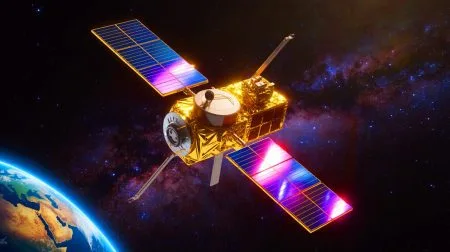| IN A NUTSHELL |
|
The recent innovation in recycling discarded Covid face masks into advanced materials for electric vehicles (EVs) stands as a testament to human ingenuity and environmental responsibility. With billions of masks discarded since the pandemic’s onset, this novel method not only addresses a significant waste problem but also presents a promising solution for the electronics industry. Researchers in Australia and China have pioneered a technique that transforms these masks into a nanocomposite film, showcasing the potential of a circular economy and the promise of sustainable technology.
From Pandemic Waste to High-Value Film
Since the Covid-19 pandemic began, over 950 billion single-use masks have been discarded globally. These masks, primarily made of polypropylene (PP), often end up in landfills or are incinerated, contributing to significant environmental pollution. Incineration releases toxic gases, while landfills allow microplastics to seep into soil and water sources. However, a new closed-loop “upcycling” process offers a sustainable solution. By cleaning and shredding these masks and blending them with tannic acid, researchers coat the PP fibers with a negative charge. Graphene nanoplatelets then self-assemble around these fibers, creating a material that can be hot-pressed into films.
This method is not only efficient but also eco-friendly, using only water and food-grade tannic acid. The process operates at atmospheric pressure and integrates seamlessly with existing manufacturing methods. This innovation not only addresses the pollution crisis but also provides a direct pipeline from waste collection to production, making it a viable solution for large-scale implementation.
Record Performance for Heat and EMI
The resulting PP@G nanocomposite film boasts impressive properties. It delivers an in-plane thermal conductivity of 87 W per meter-Kelvin (W/m·K), significantly exceeding the 50 W/m·K threshold required for next-generation electronics like 5G and 6G modules. Laboratory tests demonstrated that these films, when used as heat sinks, kept devices significantly cooler compared to traditional materials.
In terms of electrical performance, the PP@G film excels as well. It offers 88 decibels (dB) of electromagnetic interference (EMI) shielding, outperforming many commercial materials. This makes the film ideal for use in high-density electronics, where both heat dissipation and EMI shielding are critical. The material’s flexibility and durability further enhance its appeal, withstanding rigorous thermal cycling without delamination.
Circular Economy Gains and Industrial Outlook
Converting mask waste into high-value films presents substantial environmental and economic benefits. A life-cycle assessment reveals that each kilogram of PP@G film conserves 3.47 megajoules of fossil-fuel energy and reduces carbon dioxide emissions by 2.53 kilograms compared to conventional disposal methods. Economically, the process is viable, with a projected profit margin of approximately $468 per ton of masks processed.
This innovation not only provides industries with cost-effective, high-performance materials but also opens up new opportunities in electronics and recycling. The research team is expanding this approach to other plastic wastes and collaborating on modules for various applications, including EV batteries and aerospace electronics. Pilot production is on the horizon, with discussions for a 2026 launch already underway.
Innovation Driving a Sustainable Future
By transforming waste management into a strategic resource, the PP@G project sets a precedent for sustainable electronics. Governments are encouraged to establish dedicated mask-recycling programs to ensure a steady supply of raw materials. This initiative not only mitigates environmental impacts but also aligns with the growing demand for sustainable solutions in technology and manufacturing.
The integration of advanced materials engineering with environmental stewardship highlights a new era of innovation. As industries look to reduce their ecological footprint, the PP@G project exemplifies how challenges can be turned into opportunities. How will other sectors embrace this model, and what future innovations will arise from similar environmental challenges?
Did you like it? 4.6/5 (27)








Wait, so my face mask could end up powering a Tesla? That’s insane! 🔋
How do they ensure that all harmful viruses are eliminated from the masks before they’re recycled?
Thank you for shedding light on such an innovative solution! 🌟
This sounds promising, but won’t the collection and cleaning process be too costly?
Cool idea, but is it really scalable? 🤔
Lol, turning trash into treasure, literally. Love it! 😂
How long before we can see these materials in commercial EVs?